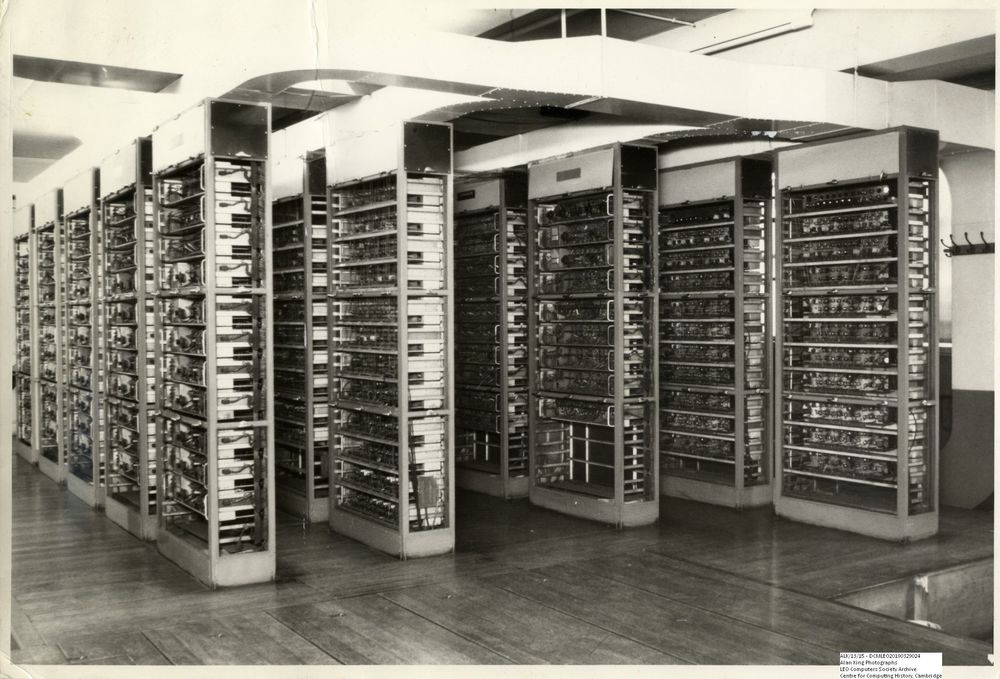
| Home > LEO Computers > Lyons Electronic Office (LEO) Archive > CMLEO/LS - LEO Comput ... s Society Collection > Photographs > Photographs of LEO I > 61190 LEO I racks (1954) |
61190 LEO I racks (1954)
|
Description of Photograph Photograph of the 21 LEO I racks, fully populated with covers off. The extra rack on the right hand side dates the image as being later on in the development process.
This image appears in the interactive plan for our Virtual LEO I installation, p73.
Research comments: LEO had 21 racks of valves in total, the 21st being added relatively late on in the development process. Each rack held 12 units consisting of 28 valves per unit. When valves failed, the faulty unit could quickly be replaced to minimise machine downtime. This design was a significant improvement on the EDSAC machine developed at Cambridge, where failed valves had been difficult and time-consuming to find and replace. Many of LEO's valves were commonly found in TV and radio equipment at the time, but others were more specialised, having been purchased from government surplus stocks. Later, reliable supplies of valves were sourced from Mullard and other suppliers. One member of staff always arrived at work earlier than the others so the machine could be powered and the valves slowly warmed up. According to Jean Cox, John Pinkerton's clerical assistant, this job often fell to her in the early LEO days. Later, according to Peter Bird's book, it became part of junior engineer David Wheeler's daily routine. At the top of the photograph, the heat extraction ducts can be seen. In the bottom right corner the fact that the floor is raised, to house the mercury delay line stores, is obvious. In fact, the racks sit on the real floor, as the raised floor was constructed around the already installed racks. (LM) Provenance Date: 1954 Physical Description: 1 photographic print; black and white Archives Hub References: CMLEO/LS/PH/1/61190 ALK/13/15 Other References: DCMLEO20190329024 Comment on This Photograph This exhibit has a reference ID of CH61190. Please quote this reference ID in any communication with the Centre for Computing History. |























